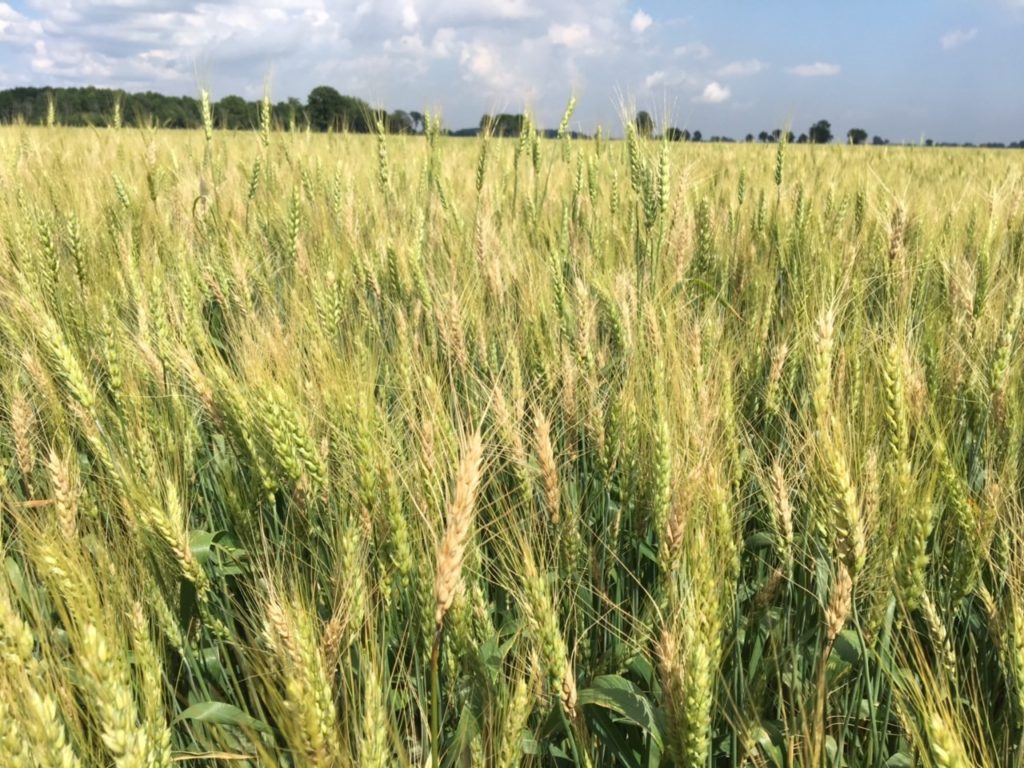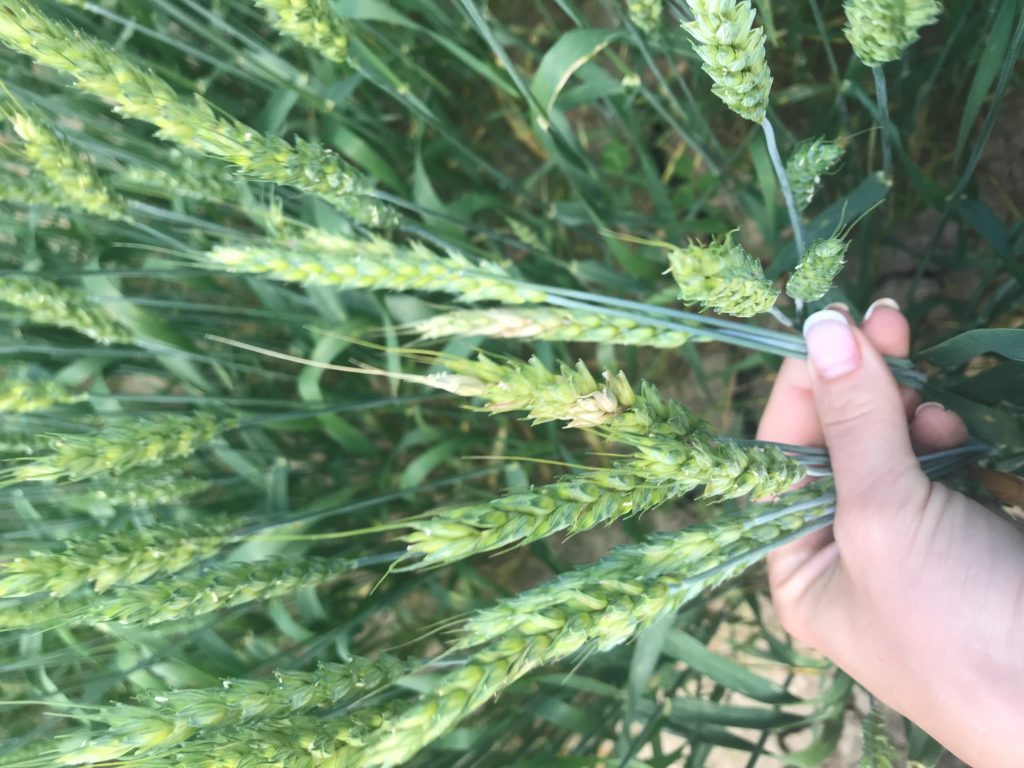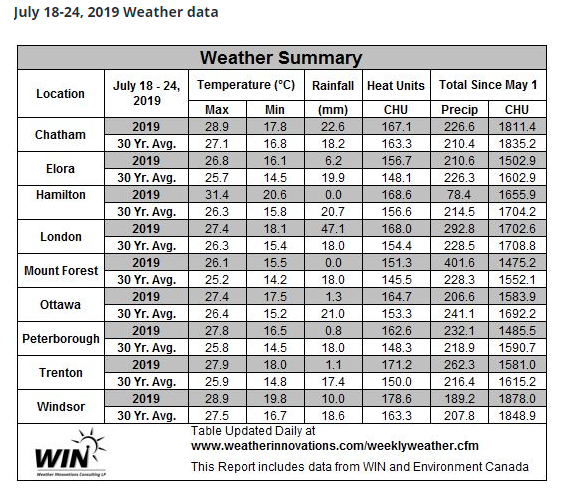Winter Wheat Harvest
Harvest has been slow to start in the province, lagging 7-14 days behind last year. Early yield and quality reports have been decent given the late planting date and challenging spring, but more acres will need to be harvested before any generalizations can be made. In fields were there are concerns of fusarium head blight (FHB), there are no rescue treatments available now to stop further infection (Figures 1 and 2). Careful harvesting, drying and storage strategies are the best way to maximize grain quality. The following information gives our best recommendations to put quality grain in the bin.
- Harvest as early as possible
- Slow forward speed
- Use high wind blast
- Open cleaning sieve settings
- Immediately dry infected grain over 16% moisture in a heated air dryer

Figure 1. Bleached grain heads in a field of winter wheat starting to mature, an indication that FHB may be an issue in that field. Photo courtesy of Jeff Jacques.

Figure 2. Closeup of a bleached grain head infected with FHB (Photo courtesy of Joanna Follings)
Post-harvest weed management
A significant amount of annual weed seeds can be produced and dispersed after wheat harvest if the ground is left fallow. In some years, annual weed seed can mature in as little as 4 weeks after harvest. Planting a cover crop (e.g. oats) after wheat harvest will often minimize annual weed seed dispersal and allows an opportunity in the fall to terminate the cover crop and deal with perennial weeds at the same time. If it is not desirable to plant a cover crop, shallow tillage can also reduce the number of weeds setting seed and will allow the perennial weeds to re-grow so that they can be managed in the fall.
If red clover was under-seeded into the wheat crop there are a couple of ways that you can knock back annual weed growth so that you can let the red clover grow as much as possible and maximize its nitrogen credit. The tried and true method, but most labour intensive, is to “clip” or trim the top of the red clover which will ‘chop off’ the weed seed heads at the same time. More recently OMAFRA and the University of Guelph have experimented with applications of MCPA to manage broadleaf weeds in a red clover cover crop. There are three key learnings from this work:
1.The ester formulation of MCPA causes significantly less plant damage then the amine formulation
2.Red clover biomass is initially stunted during the first week after application but does recover within 2-3 weeks.
3.Targeting broadleaf weeds when they are smaller will result in better control, if annual grassy weeds are predominant then the application of MCPA Ester will be insufficient and clipping is a better option to minimize weed seed dispersal.
Forages:
Potato leafhoppers have been found above threshold and have resulted in visual injury symptoms (Figure 3). Economic losses occur before plant symptoms develop, so it is important to identify the presence of large leafhopper populations before the damage occurs. Scouting with a sweep net will help you determine whether early harvest or spraying is needed. Scout at intervals of 5 to 7 days. To determine the number of leafhoppers, including adults and nymphs, take 10 sweeps and divide by 10. Do this in 5 representative areas of the field and note the height of the alfalfa. Recommended action thresholds are listed in Table 1.
Figure 3. Potato leafhopper feeding symptoms in alfalfa (Photo courtesy of Christine O’Reilly)
Soybeans
Few soybean aphids have been seen so far but conditions can change quickly. Regular scouting should be done from now until the R6 (full seed) stage of soybean to minimize any yield loss with this pest. The aphid advisor app, which can be downloaded at www.aphidapp.com helps assess whether control of soybean aphids is warranted and indicates other population numbers reported in other areas of the province. The action threshold is 250 aphids per plant on 80% of the plants and is actively increasing when the crop is in the R1 stage until end of R5 stage.

Source : Filed Crop News